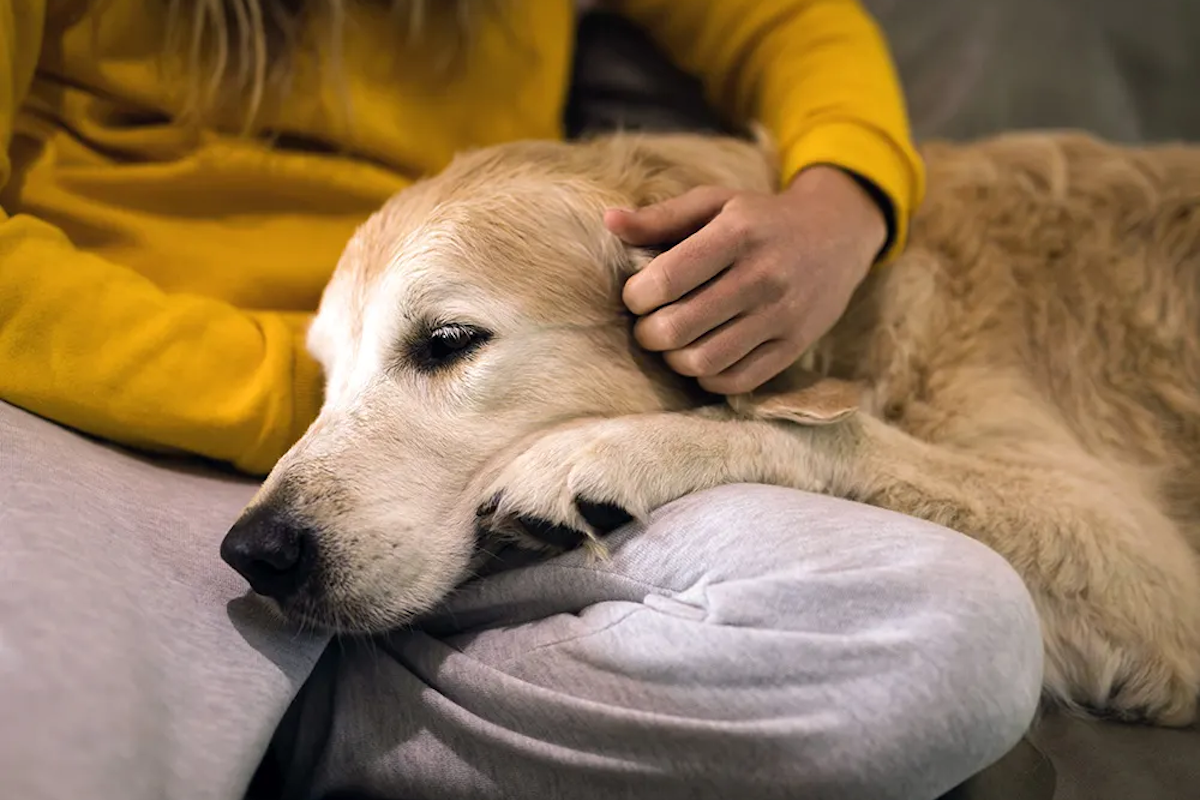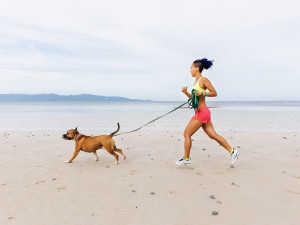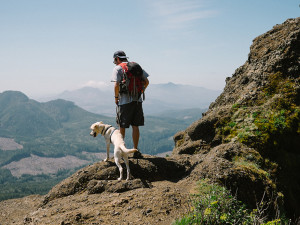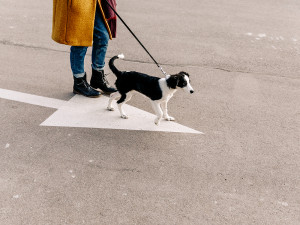6 Signs Your Dog Is Not Getting Enough Exercise
How to know when they need an extra walk.
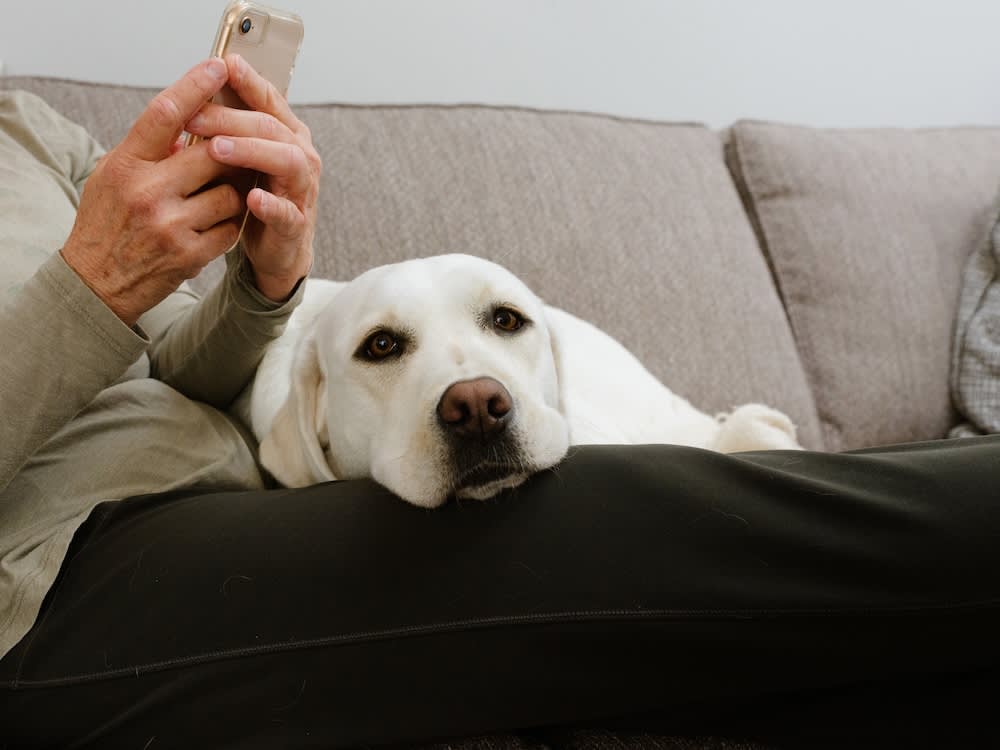
Share Article
Most dog parents know that regular walks and exercise are part of the deal when you bring a pup into your life. “Everyone gets more exercise” definitely goes in the pro column when you’re deciding whether to get a dog. But how can you tell if your doggo is getting enough activity? It’s not always a one-size-fits-all answer, experts say.
“It is difficult to give a specific daily routine that would apply to all dogs since the needs of a teacup Chihuahua and an Australian Shepherd are extremely different in terms of exercise,” says Dr. Amy Fox, a veterinarian based in New York City.
Similarly, Frankie Jackson, a veterinary nurse, animal behavior consultant, and owner of Canine Counselingopens in new tab in Smyrna, Georgia, says activity needs can vary depending on your dog’s age, breed, and personality. She added that while some pet parents may want to take their pup for long hikes or runs, not every dog can handle that level of activity.
“It depends on the energy of the breed, the energy of the dog as an individual, and the dog’s lifestyle,” she explains. “It’s very nuanced, and very unique to each dog. We need to figure out what the dog’s needs are, rather than our own.” So, how do you gauge if your pup is getting enough exercise, and what can you do about it if they are not? Here are some signs you may need to ramp up your pet’s physical activity and how to do so safely.

Weight gain
The most straightforward sign your dog is not getting enough physical activity, per Dr. Fox? They’ve put on some pounds. “The most common physical sign of lack of exercise is weight gain with more subtle changes in muscle mass and endurance,” she says.
If your pup is starting to get heavier and decline from their usual bouncy self, it might be time to step up the walks and outdoor playtime. You may also notice they tire more easily during activities they used to breeze through — like if a short game of fetch leaving them panting and exhausted. Over time, under-exercised dogs can also lose muscle tone, especially in their hind legs, which can affect their mobility and overall health.
In other words: If your dog’s getting pudgier and slower, they probably need a little more action in their routine.
Changes in appetite
A shift in your dog’s appetite can be a subtle clue that something’s off with their activity levels. Dogs who aren’t getting enough exercise may start snacking more out of boredom, kind of like humans raiding the fridge just for something to do. But surprisingly, the opposite can happen, too.
“Dogs can gain weight even when they are eating less, because they get a bit depressed,” Jackson says. Without regular physical activity to boost their mood and metabolism, some dogs become lethargic and disinterested in meals, yet still pack on pounds. That’s because their bodies aren’t burning calories the way they normally would, and even a reduced food intake can exceed their energy needs.
So, whether your pup is inhaling kibble or turning up their nose at dinner, it could be a sign they need more playtime, not just a diet adjustment.
Destructive behavior
For dogs, exercise is important for physical health — but so is their mental wellbeing. Because of this, they may react emotionally to not getting enough exercise: That means destructive behavior, anxiety, and an increase in vocalization (aka barking, howling, whining, etc.)Jackson says.
“Going outside for dogs is not just about exercise, it’s about what they are doing with their brains — it’s about exploring their environment, sniffing around, and collecting information,” she says. “When they can’t do that, frustration and anxiety kicks in and they’ll find ways to soothe themselves, and a lot of the time that looks destructive.”
In other words, if your pup is shredding their toys or even your pillows, they may need more exercise as an outlet for their mental and physical energy.
Attention-seeking
An obvious sign your dog wants to get out more is scratching or sitting at the door, Jackson says. But dogs can display other attention-seeking behavior (again, like whining and barking) and taking items around the house, even if they aren’t necessarily destroying them.
“Exercise is about mental enrichment, but also bonding,” she explains. “You might see them doing things like stealing a sock, because they know it’s something they aren’t supposed to do and it will get the owner to interact with them.”
So, even if your dog isn’t necessarily destroying items in the home or running around with the zoomies, if they are acting needy, they might have some pent-up energy that exercise can help.
Lethargy and sedentary behavior
While some dogs may respond to a lack of physical activity by getting the zoomies, acting more destructive, and displacing extra energy into bad behaviors, others will have the opposite response, Jackson says.
“If lack of exercise goes on for a long time, it becomes normal to them, and their bodies adapt, and they may appear lazy,” she says. “They lose that stamina, they lose that physical fitness, and they become more sedentary in general. They kind of give up, which sounds sad, and it kind of is — it’s not necessarily a happy shift.”
Additional health problems
Over time, a lack of physical activity can take a serious toll on your dog’s health, Jackson warns. Without regular movement to keep muscles engaged, dogs can start to lose muscle mass, which not only affects their mobility but increases their risk of injury. Combine that with weight gain, and you’ve got a recipe for a range of health issues.
“Excess weight can predispose dogs to joint problems like arthritis and painful ligament tears, as well as other obesity-related conditions,” she explains. These might include diabetes, heart disease, or difficulty breathing, particularly in breeds that are already prone to such problems.
Behavioral issues
But the impact of inactivity isn’t just physical. “Lack of exercise also puts dogs at risk for behavioral problems which can be destructive, stressful, and sometimes lead pet parents to rehome their dogs,” Jackson says.
Pent-up energy with no outlet can turn into barking, chewing, digging, or even aggression — behaviors that often stem from frustration, boredom, or anxiety. In other words, a tired dog isn’t just a healthy dog; they are a happier and more well-behaved one, too.
If you’ve established your dog is not getting enough physical activity, it’s important to ramp up their activity slowly and safely, Dr. Fox says. A dog that has been sedentary for quite some time cannot get back to an active lifestyle in one day. This is especially important to keep in mind when adopting dogs; you may not know what level of physical activity they are accustomed to from their previous home or the shelter.
“It is important to very gradually increase a dog’s activity level,” she says. “Attempting to suddenly go running with a dog that is mostly sedentary, for example, can put them at risk for overheating and orthopedic injuries, like ligament tears, since their bodies are not conditioned for that kind of intense activity.”
Instead, she recommends beginning with controlled leash walks, gradually increasing the length by five to 10 minutes at a time. Set a comfortable pace at which your dog isn’t panting heavily or stopping to rest frequently. Keep an eye out for signs of fatigue or overheating, and always avoid exercising in extreme heat or during the hottest parts of the day. “Familiarize yourself with the signs of overheating so you can stop before your dog gets too hot,” she adds.
But physical activity is only half the picture, Jackson says. Mental stimulation is just as essential, especially in the early days of building a new routine. “We have to slowly progress to where a dog can reach their full physical potential,” she explains. “In the meantime, we need to make sure we’re meeting their mental-energy needs, too, so they don’t become bored or destructive.”
Dogs coming from shelters or low-activity homes may be overly excited to jump into action, but that excitement can outpace their actual ability. “Don’t ramp them up too quickly, because dogs — as amazing as they are — are not always in tune with what their bodies can do.”

Kari Paul
Kari Paul is a Paris-based writer, artist, and filmmaker whose work has been published in The Guardian, The Wall Street Journal, New York Magazine, ELLE, and VICE. She has had an endless march of more than 20 foster kittens, cats, and dogs over the last few years and always cries when they leave. She covers technology, personal finance, and animal behavior, among other topics.
Related articles
![Woman walking her dog in a park]()
Dog Walking 101: How Often Should You Walk Your Dog?
And why you shouldn’t skip the longer routes.
Can You Overexercise Your Dog?
There’s such a thing as too much of a good thing.
![A man with a dog on a hike stoping to enjoy a beautiful overlook on a cliff.]()
How to Take Silly Little Mental Health Hikes With Your Dog
It’s good for you both — promise.
![Person walking their dog in the street]()
How to Leash-Train a Puppy or Dog
Don’t let your new dog walk you.
How to Manage Leash Reactivity in Your Dog
If your pup acts diabolical on walks, you are not alone. Here’s what you can do.


